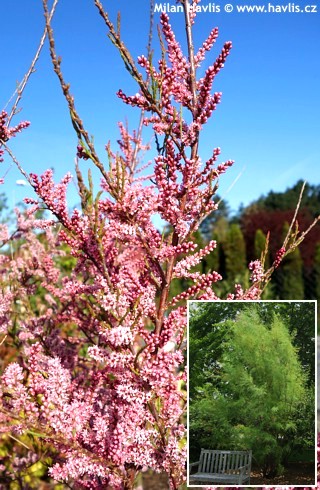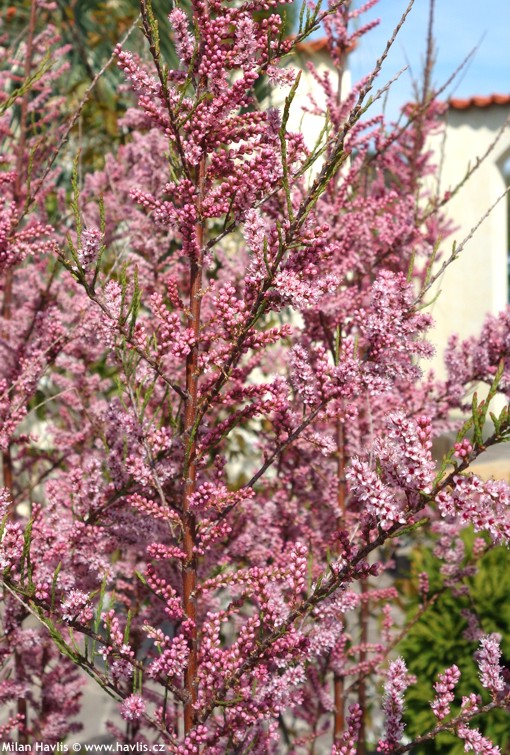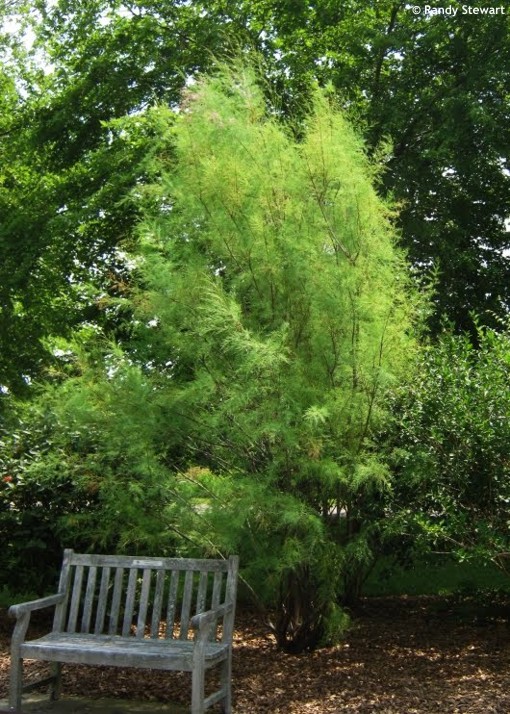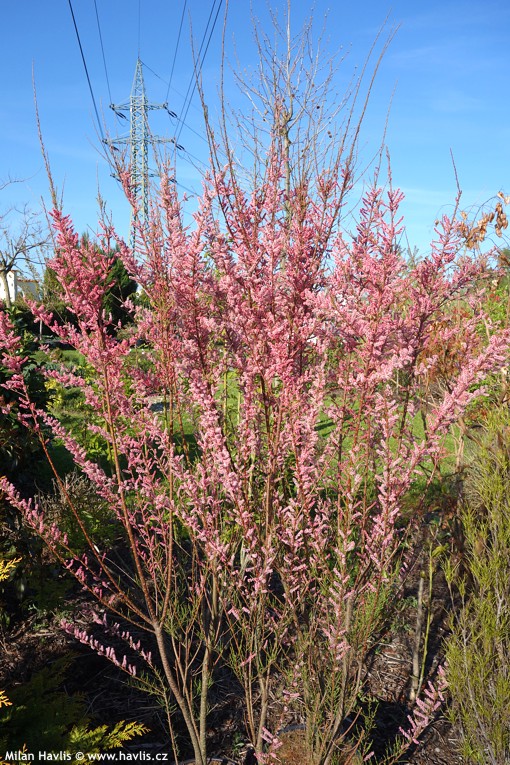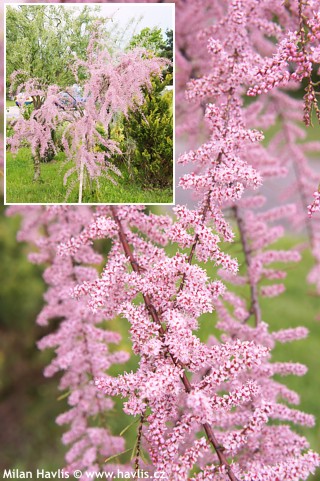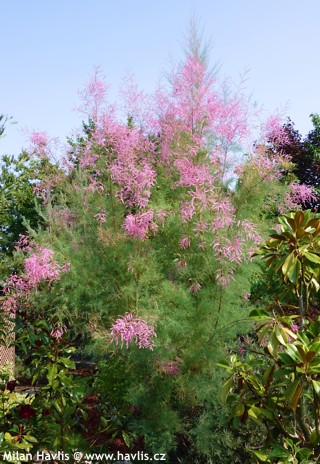Tamarix tetrandra 'RUBRA' tamarisk


Tamarisk (salt cedar) is a beautiful plant with tiny leaves and profusion of flowers. There are several types (species) which differ mainly in their flowering period. This one is called 4-stamen tamarisk and belongs to the spring flowering species and Rubra is a variety with very rich pink flowers from early or mid May until early June. Deciduous leaves are scale-like, very small, and dark green. Overall appearance is feathery and very fluffy thanks to which the plant looks great in a Mediterranean-style landscape, or combined with other larger plants with leathery foliage.
Tamarisk grows medium fast and this variety is quite upright and well-behaved so annual pruning is not crucial yet can be carried out soon after flowering (early summer). Best action is to cut back 80% of previous year's growth.
Comparison of salt cedars cultivated in Central Europe:
- tamarix ramosissima – blooms in summer, upright habit, leaves are more blue-green, bark is pale brown or dark grey
- tamarix parviflora – blooms in spring, arching, leggy habit if unpruned, leaves are more green, bark is chestnut brown
- tamarix tetrandra – blooms in spring, habit varies with variety but mostly upright, leaves are green, bark is dark brown or almost black
Grow tamarisk in full sun, dry or medium moist soil. It does not need a specific pH or too fertile soil. However, if you prune it hard a portion of a slow-release fertilizer is recommended. Hhardy to min. -29 °C (USDA zone 5).
Last update 05-05-2016; 24-05-2021

2 712 Kč

2 712 Kč
Goods are shipped all over Europe. For Russia and U.K. and for further details please read about SHIPPING OPTIONS HERE.
Are you interested in a serious discount for orders NOV-FEB? Check your options here.
THE PRICES INCLUDE VAT of 15%. For quick conversion you can use 1 CZK = approx. 0.04 EUR
- STANDARD QUALITY - Plants of this group are 1st class quality with number of branches and overall density adequate to their size and age, considering they were container grown.
- DE LUXE QUALITY - This label guarantees a luxurious quality of manually selected plants that, compared to their height and age, are exceptionally dense and beautiful.
- EXTRA - These plants are usually mature and bigger specimens with exceptional overall appearance.
- STANDARD (as described in the plant form) means a tree with a trunk of 190-210 cm and a crown at the top, unless specified differently. The commercial size for trees is their girth measured in the height of 1m from ground.
- HOBBY - These plants are of the same quality as our standard-quality plants but younger and therefore cheaper.
- SHRUB - a woody plant with branches growing bushy from the ground level.
- HALF-STANDARD or MINI-STANDARD - a small tree with shorter trunk, its size is usually specified.
- FEATHERED - These are trees with branches growing already from the base of the trunk and up along the stem.
- GRASSES and PERENNIALS - Sizes given usually read the diameter of the pot or the clump, as specified.

































